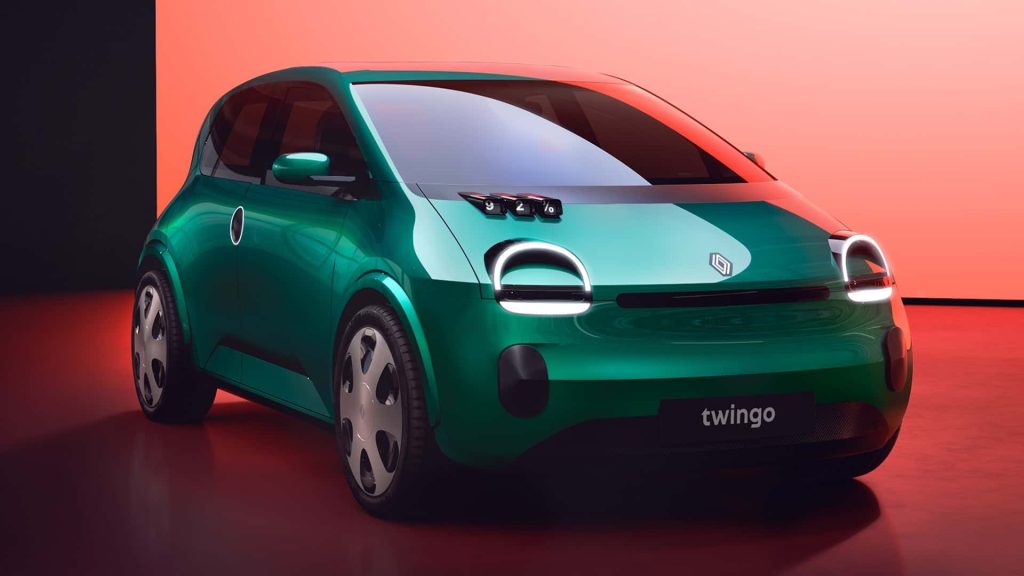Renault Group is making a bold move in the electric vehicle (EV) market with the conceptual unveiling of its next-generation Twingo, a compact city car. Scheduled for a 2026 launch, the Renault Twingo represents the brand’s venture into more budget-friendly EVs, aiming for a price tag below 20,000 euros. Not only is it affordable, but it’s also set to be the brand’s most energy-efficient EV to date, boasting an impressive 10 kilowatt-hours per 100 kilometers energy consumption.
The Twingo draws inspiration from the original 1992 model
This efficiency marks a significant leap forward, making the Twingo EV 50% more efficient than similar small EVs currently available. While detailed specs are yet to be released, it’s expected that the Twingo will be built on the newly named AmpR Small platform, shared with the upcoming Renault 5 and Renault 4 electric models.

Renault’s strategy with the Twingo is intriguing, as it positions itself as a direct competitor to Chinese EV manufacturers, known for their rapid development cycles. CEO Luca de Meo has emphasized Twingo’s role as a European version of Japan’s compact kei cars, highlighting its suitability for urban environments where larger vehicles are impractical.
Styling-wise, the 2026 Twingo draws inspiration from the original 1992 model, blending retro elements with modern design. It retains the classic single-box shape but adds modern touches like five doors and revamped headlights and taillights. The hood vents, a nostalgic nod to the original, now serve as battery charge level indicators.
While the Twingo’s launch is primarily focused on the European market, where it will compete with vehicles like the Volkswagen ID.1 and Citroën e-C3, its impact goes beyond just another EV release. It represents a strategic shift for Renault, as they embrace both the challenges and opportunities in the evolving EV landscape, aiming to offer practical, efficient, and affordable mobility solutions. The Twingo stands as a testament to Renault’s commitment to innovation and competition in the global EV market.
RELATED:
- More than 150,000 Electric Vehicles were Sold in October in France
- Centurion No Pogo SL electric mountain bike with a Bosch Performance Line SX motor announced
- Best Smart Treadmills of 2023
(Via)







